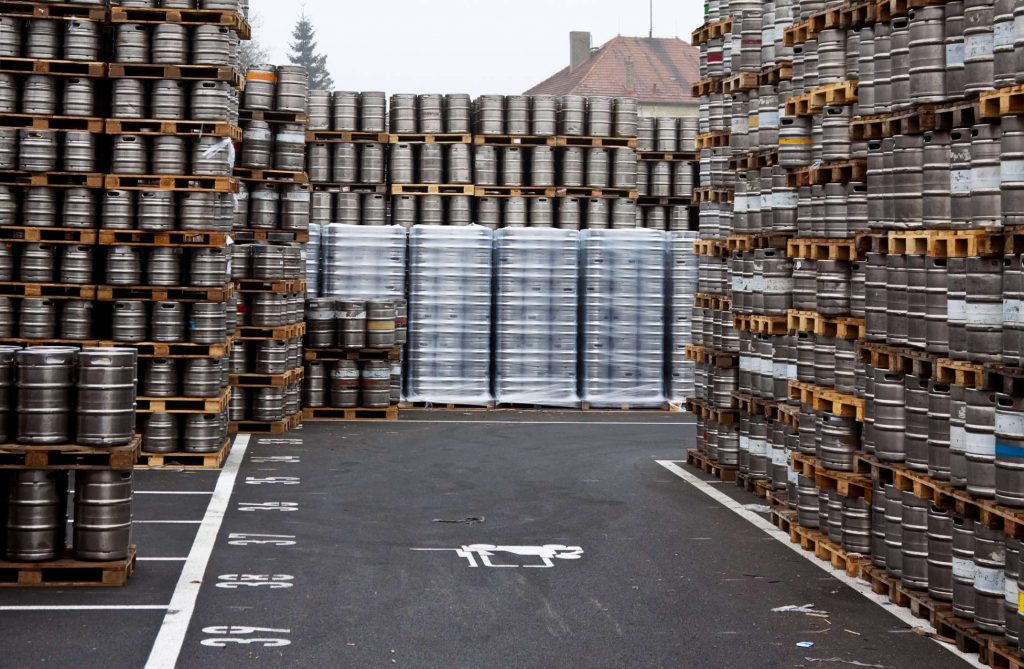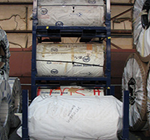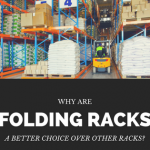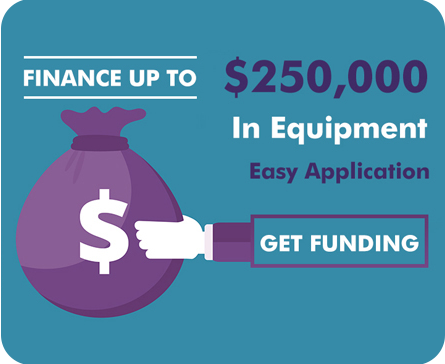Steel Pallets vs. Wooden Pallets: Which Is the Better Choice for Your Business?
Logistics and supply chain management requires making tough choices about pallet selection - often seen as just another minor detail - but in reality, this decision has major ramifications on both efficiency and effectiveness of operations. Selecting suitable pallets impacts product safety, ease of handling, transportation costs and environmental sustainability directly; explore benefits and considerations between steel and wooden options before making informed decisions that align with specific business goals and objectives.

What are Steel Pallets?
Steel pallets are industrial workhorses renowned for their unmatched strength and resilience. In demanding environments, they stand the test of time effortlessly handling heavy loads while remaining intact while offering significantly longer lifespan compared to wood alternatives; their resistance to wear-and-tear makes them reliable long-term solutions at cost effective rates for businesses seeking cost-efficient long-term solutions.
Advantages of Steel Pallets
Durability: Steel pallets have proven themselves as ideal material choices in industrial settings due to their durable nature; these durable features ensure longer lifespan compared to many other pallet materials.
Longevity: Steel pallets offer significantly longer longevity compared to their wooden and other alternatives, resisting wear-and-tear, corrosion and degeneration over time.
Strength: They have greater load-carrying capacities than most wooden pallets and do not warp, bend, or break under heavy loads – an asset in industries with heavy and valuable goods to transport or store.
Potential Drawbacks of Steel Pallets
Weight: Steel pallets tend to be heavier than wooden ones, which makes them less convenient for manual handling and requires special machinery such as forklifts or pallet jacks for transportation costs due to added weight.
Cost: Although wooden pallets offer long-term cost savings due to their longer lifespan, their initial investment may prove challenging for businesses operating within budget constraints.
Rust and Corrosion: Without proper maintenance, metal surfaces can rust and corrode rapidly in humid or corrosive environments, necessitating businesses to implement preventative measures such as coatings or galvanization in order to limit this drawback.
What are Wooden Pallets?
Wooden pallets are flat structures constructed out of wooden, designed for transportation and storage of goods. Their main function is stacking, storing, handling and transporting various forms of products ranging from food and beverages, automobiles, material handling goods as well as various industrial goods – these pallets can often be found used within warehouses, distribution centers or manufacturing facilities due to their durability, versatility and cost-efficiency.
These pallets typically consist of a top deck, bottom deck and stringers or blocks to provide support and stability. Their design may differ based on factors like load capacity, handling equipment compatibility and intended use; plus wooden pallets are repairable, recyclable or dispose-off making them environmentally-friendly choices for logistics operations. Wooden pallets play an indispensable part in material handling and logistics operations, thanks to their affordability and wide availability, making them cost-effective solutions for businesses of all sizes. However, while wooden pallets do provide numerous benefits, there can also be drawbacks associated with them that should be taken into consideration before investing in this form of transportation.
Types of Wooden Pallets?
Wooden pallets come in various types to meet various specifications for load capacity, equipment compatibility compatibility and intended purpose based on various factors including load capacity. Here are a few commonly available wooden pallets:
Wooden Shipping Pallets
Wooden shipping pallets are specially-constructed containers designed to transport goods over great distances – be they domestically or internationally. Built to withstand being handled by forklifts and jacks during transportation, wooden shipping pallets may meet international Plant Protection Convention (IPPC) shipping standards by being heat treated or fumigated to prevent spread of pests or diseases across borders.
Wooden shipping pallets offer various sizes and load capacities to accommodate different cargoes and transportation methods, making them popular choices in industries that specialize in trade or logistics. Their sturdy construction makes wooden shipping pallets highly reliable – an advantage which appeals to trade and logistics businesses in particular.
Heavy Duty Wooden Pallets
Heavy duty wooden pallets are specially constructed with wooden components like larger stringers, thicker deck boards and reinforced blocks or corners to withstand heavier loads and more challenging handling conditions than regular pallets can offer. Their increased load capacities make these suitable for industries dealing with dense or bulky products or machinery or equipment such as bulk shipping containers or materials handling plants.
One of the most important aspects of heavy duty wooden pallets is their durability. They are built from durable hardwood and designed to survive the demands of transportation and storage, even in harsh situations. This endurance ensures that they can withstand enormous weights without failure. Heavy duty wooden pallets are known for their high load capacity. They are intended to carry heavy loads, often ranging from 2,000 to 5,000 pounds or more, depending on size, design, and construction. They are ideal for hauling large and heavy products due to their great load capacity.
Small Wooden Pallets
Small wooden pallets have become ubiquitous across industries like manufacturing, automotive and construction; in which sturdy pallets must bear loads while withstanding harsh environments.
Small wooden pallets are used for transporting or storing smaller or odd-shaped items that don’t require the full size pallet, such as books. Customization capabilities make these versatile pallets suitable for retail stores, agriculture farms and pharmaceutical firms where space efficiency and handling of loads is of paramount importance.
Fumigated Wooden Pallets
Fumigation processes on fumigated wooden pallets aim to eliminate pests, insects and pathogens present within them to meet shipping regulations for cross border trade to stop the spread of disease-bearing species such as mosquitos. Pallets are enclosed within an enclosure during fumigation with fumigants like methyl bromide or phosphine applied directly onto them in order to kill off any insects or organisms present within.
Fumigated wooden pallets can be identified using markings or labels to confirm compliance with phytosanitary guidelines set by IPPC like ISPM 15. Such pallets play an essential part in maintaining biosecurity while adhering to import/export rules during transport of goods between nations.
Advantages of Wooden Pallets
Affordability: Wooden pallets are known for their cost-effectiveness. They are often more affordable to purchase initially compared to alternatives like steel or plastic pallets, making them a practical choice for budget-conscious businesses.
Availability: They are readily available in a variety of sizes and configurations which ensures that businesses can easily source them, making them a convenient option for companies with dynamic supply chain needs.
Repairability: Damaged boards can be replaced and basic maintenance can extend their lifespan, reducing the need for frequent replacements and lowering overall costs.
Disadvantages of Wooden Pallets
Susceptibility to Damage: One of the primary drawbacks of wooden pallets is their vulnerability to damage. Over time, the wood can splinter, crack, or become weakened, compromising the structural integrity of the pallet. This susceptibility can lead to product damage and safety concerns.
Shorter Lifespan: Compared to materials like steel or plastic, wooden pallets have a shorter lifespan. They are more likely to require replacement, which can result in higher long-term costs for businesses, especially in industries with demanding material handling requirements.
Hygiene Concerns: Wooden pallets can be porous and absorbent, which can lead to hygiene concerns, especially in industries where cleanliness is critical, such as food and pharmaceuticals. Contaminants and bacteria can become trapped in the wood, potentially affecting product safety.
Difference Between Wooden Pallets and Wooden Pallet Crates
- Wooden pallet crates are specialized structures used in logistics and transportation to provide both the support of a pallet and the containment of a crate. These crates are essentially pallets with added walls, creating compartments for enclosing and protecting goods during transit and storage. Unlike traditional pallets, which consist of flat surfaces and supporting beams or blocks, pallet crates feature sides and sometimes lids, allowing for the secure containment of goods within a confined space.
- The design of wooden pallet crates offers several advantages in handling and transporting goods. Firstly, they provide enhanced protection for goods by enclosing them within a sturdy wooden structure, shielding them from external elements such as dust, moisture, and impacts during transit. This added protection is particularly beneficial for fragile or sensitive items that require careful handling and safeguarding against damage.
- Additionally, wooden pallet crates offer increased security for valuable or high-risk goods by limiting access to the contents. The enclosed design helps prevent tampering and theft, providing greater peace of mind for shippers and recipients alike. Moreover, pallet crates are often customizable to accommodate specific dimensions and requirements, allowing for tailored solutions to meet the unique needs of different types of cargo.
- Despite their benefits, wooden pallet crates also have some limitations compared to traditional pallets. Their enclosed design may restrict access to goods and hinder visibility, making it more challenging to inspect or access individual items within the crate. Furthermore, the added material and labor involved in constructing pallet crates can contribute to higher manufacturing costs compared to standard pallets.
Customizability and Adaptability
Steel Pallets:
Customizability: Steel pallets are less customizable compared to wooden pallets. Modifying them typically requires specialized equipment and welding skills, which can be costly and time-consuming. Customization options are limited, making it challenging to tailor them to specific load sizes or storage requirements.
Adaptability: They are durable and robust, making them suitable for heavy-duty applications. They can adapt well to challenging environments, such as outdoor storage or extreme temperature conditions. However, their lack of customization options may limit their adaptability in situations where load dimensions vary significantly.
Wooden Pallets:
Customizability: Wooden pallets are highly customizable. They can be easily modified or repaired in-house using basic woodworking tools. This adaptability allows businesses to tailor pallets to suit various load sizes and shapes, making them a versatile choice for industries with diverse storage needs.
Adaptability: Wooden pallets are adaptable to a wide range of applications. Their customizability makes them suitable for accommodating different load sizes, and they can be easily configured to meet specific storage or transportation requirements. Wooden pallets are especially well-suited for businesses with variable product dimensions.
Making the Decision
In the end, the choice between steel and wooden pallets comes down to a thorough evaluation of your business’s unique requirements and priorities. Steel pallets offer unmatched strength and longevity, making them indispensable for industries that demand heavy-duty performance. Wooden pallets, on the other hand, offer cost-effectiveness and versatility, ideal for businesses seeking adaptability and budget-friendly options. It’s essential to consider factors such as load capacities, budget constraints, sustainability goals, customization needs and available handling equipment. By carefully weighing these factors, you can make an informed decision that not only optimizes your supply chain but also aligns with your business’s long-term success and values. Whichever pallet type you choose, it’s a choice that can impact your operational efficiency and overall success, making it worth the careful consideration it deserves.
About The Author










